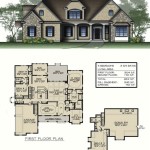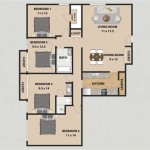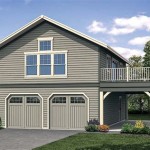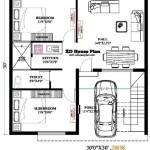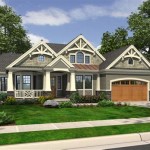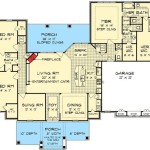L-Shaped House Plans With 4 Bedrooms: Design, Functionality, and Considerations
The L-shaped house plan, characterized by two wings meeting at a right angle, offers a unique blend of architectural style and functional living space. When combined with a requirement for four bedrooms, the design requires careful consideration of space allocation, privacy, and overall flow. This article explores the advantages, design considerations, and potential challenges associated with L-shaped house plans incorporating four bedrooms.
The popularity of the L-shaped design stems from its inherent ability to create distinct zones within a home. The two wings naturally lend themselves to separating living areas from sleeping quarters, or public spaces from private ones. When four bedrooms are integrated, this zoning becomes even more critical, ensuring a comfortable and functional living environment for all occupants. The strategic placement of bedrooms within the L-shaped configuration is crucial for optimizing privacy, minimizing noise disruption, and maximizing natural light exposure.
Furthermore, the L-shape creates a natural courtyard or outdoor space, often enclosed on two sides by the house itself. This feature can be a significant advantage, providing a private and sheltered area for relaxation, recreation, or outdoor dining. The orientation of the L-shape in relation to the sun and prevailing winds is a key factor in determining the usability and comfort of this courtyard space.
Key Advantages of the L-Shaped Design for Four-Bedroom Homes
The L-shaped house plan offers several distinct advantages when designed to accommodate four bedrooms. These benefits range from enhanced privacy and spatial separation to improved access to natural light and the creation of a sheltered outdoor living area.
Firstly, the configuration naturally promotes zoning within the home. One wing can be dedicated to the primary living areas, such as the kitchen, dining room, and living room, while the other wing houses the bedrooms. This separation minimizes noise transfer between these areas, ensuring a quieter and more peaceful sleeping environment. This zoning is particularly beneficial in homes with varying activity levels, such as those with young children or individuals working from home.
Secondly, the L-shape can maximize natural light exposure throughout the house. By carefully orienting the wings in relation to the sun's path, designers can ensure that both living areas and bedrooms receive ample sunlight. Larger windows and strategically placed skylights can further enhance the amount of natural light entering the home. This increased natural light not only improves the aesthetic appeal of the interior but also contributes to a healthier and more energizing living environment.
Thirdly, the inherent courtyard created by the L-shape provides a valuable outdoor living space. This courtyard can be customized to suit the needs and preferences of the homeowners, whether it's a tranquil garden, a play area for children, or an outdoor dining and entertainment space. The walls of the house provide shelter from wind and weather, creating a more comfortable and usable outdoor area. The courtyard also offers a sense of privacy and seclusion, making it an ideal space for relaxation and contemplation.
Finally, the L-shape can be easily adapted to different lot shapes and sizes. This flexibility allows for greater design freedom and the ability to maximize the use of the available land. The orientation of the L-shape can be adjusted to take advantage of views, minimize exposure to harsh weather conditions, and create a seamless connection between the indoor and outdoor spaces.
Design Considerations for Four-Bedroom L-Shaped House Plans
Designing an L-shaped house plan with four bedrooms requires careful planning and attention to detail. Several factors must be considered to ensure that the resulting home is both functional and aesthetically pleasing. These considerations include space allocation, bedroom placement, circulation patterns, and the integration of the courtyard space.
Space allocation is paramount. The size and layout of each bedroom must be carefully considered to ensure that they are adequately sized and comfortably furnished. Considerations should be given to the size and placement of closets, windows, and door openings. The master bedroom should be distinct from the other bedrooms, often with a larger footprint and an ensuite bathroom and walk-in closet.
Bedroom placement is another critical factor. The placement of the bedrooms, especially the master bedroom, should prioritize privacy and minimize noise disruption. The master bedroom is often placed at the end of one wing, away from the main living areas and other bedrooms. The remaining bedrooms can be grouped together in a separate wing, providing a dedicated sleeping area for children or guests. The placement of windows in each bedroom should be carefully considered to maximize natural light exposure while maintaining privacy.
Circulation patterns within the house are also important. The layout should facilitate easy and efficient movement between the different areas of the home. Corridors should be wide enough to allow for comfortable passage, and doorways should be strategically placed to minimize bottlenecks. The connection between the living areas and the bedrooms should be carefully considered to ensure a seamless transition between these zones.
The integration of the courtyard space is crucial for maximizing the benefits of the L-shaped design. The courtyard should be easily accessible from both the living areas and the bedrooms. Large windows and sliding doors can be used to create a visual connection between the indoor and outdoor spaces. The landscaping of the courtyard should complement the architectural style of the house and create a welcoming and inviting atmosphere. The orientation of the courtyard should be carefully considered to maximize sunlight exposure and minimize exposure to wind and weather.
Furthermore, consider the style of the home. L-shaped designs can accommodate a variety of architectural styles, from traditional to contemporary. The choice of materials, finishes, and details should reflect the overall design aesthetic and create a cohesive and harmonious look.
Potential Challenges and Solutions
While L-shaped house plans offer numerous advantages, they also present some potential challenges. These challenges typically relate to efficient space utilization, cost considerations, and potential heating and cooling inefficiencies. Understanding these challenges and implementing appropriate solutions is key to creating a successful L-shaped home.
Efficient space utilization can be a challenge, particularly in smaller L-shaped homes. The shape can sometimes lead to awkward or unused spaces, such as long, narrow corridors. To address this, careful planning is essential. Consider incorporating built-in storage solutions, such as bookshelves or cabinets, into these areas to maximize their functionality. Open-plan living spaces can also help to create a greater sense of spaciousness and improve the flow of traffic throughout the house.
Cost considerations are another important factor. The construction of an L-shaped house can sometimes be more expensive than that of a rectangular house, due to the increased complexity of the design and the need for more exterior wall area. To mitigate these costs, consider simplifying the design, using cost-effective materials, and working closely with a builder to identify potential cost savings. Careful planning and budgeting are essential for keeping the project on track and within budget.
Heating and cooling inefficiencies can also be a concern, particularly in climates with extreme temperatures. The increased exterior wall area of an L-shaped house can result in greater heat loss in winter and heat gain in summer. To address this, it's crucial to incorporate energy-efficient features into the design, such as high-performance windows, insulation, and HVAC systems. Proper orientation of the house in relation to the sun can also help to minimize heating and cooling costs.
Another challenge can be the potential for noise transmission between the two wings of the house. If the bedrooms are located close to the living areas, noise from the living areas can disrupt the sleep of those in the bedrooms. To minimize noise transmission, consider using soundproofing materials in the walls and floors, and separating the bedrooms from the living areas with buffer zones, such as hallways or closets.
Finally, the design must comply with all applicable building codes and regulations. These codes may dictate the size and layout of the bedrooms, the placement of windows and doors, and the accessibility of the house to people with disabilities. It's essential to work with a qualified architect or designer who is familiar with these codes and regulations to ensure that the house is designed in compliance with all applicable requirements.

European Style House Plan 4 Beds 2 Baths 3904 Sq Ft 520 10 L Shaped Bungalow Floor Plans

L Shaped 4 Bedroom House Plans Google Search Two Country Style Simple Floor

Home Design Plans Floor L Shaped House

Floor Plan Friday Separate Living And Bedroom Wings L Shaped House Plans 4 Dream

Coastal Contemporary House Plan Under 2600 Square Feet With L Shaped Lanai 33161zr Architectural Designs Plans

L Shaped House Plan With Upstairs Family Room Kitchenette And Home Office 777053mtl Architectural Designs Plans

Open Concept Ranch Floor Plans Houseplans Blog Com

L Shaped House Plans With Side Garages Blog Eplans Com

Featured House Plan Bhg 5680

Farmhouse Style House Plan 4 Beds Baths 3465 Sq Ft 531 2 Houseplans Com

